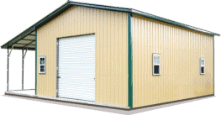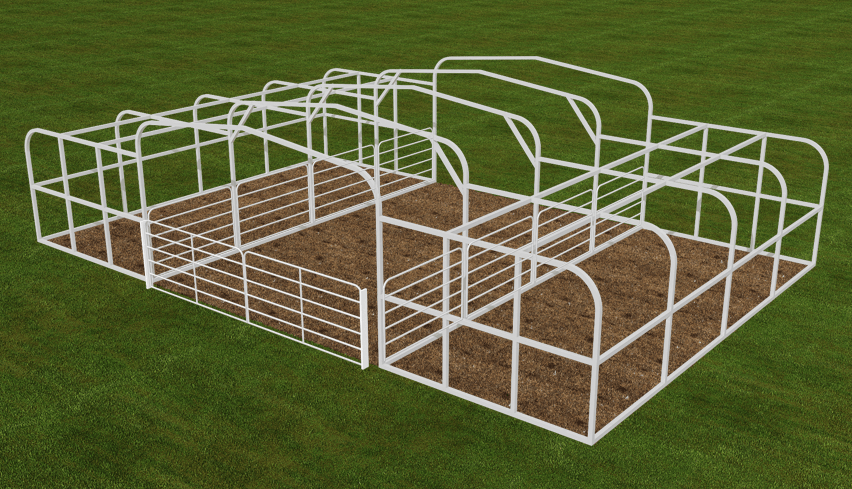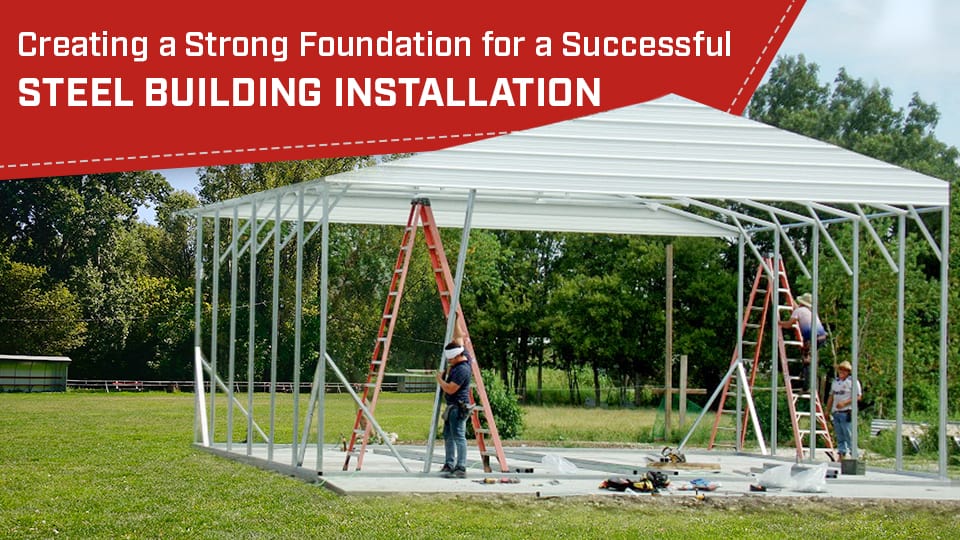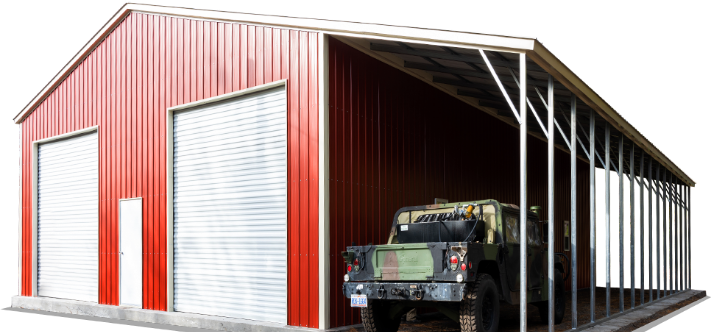Steel buildings are known for their precision and strength, but if you don’t have a sturdy foundation for the base, then you’re compromising the durability of your structure. That’s because foundations play a critical role in the safety and longevity of the structures that are sitting on them. Without proper metal building foundations, you’re taking a chance on your buildings settling or shifting. You don’t want your building to be the victim of structural damage or complete failure, do you? Of course not! So, guarantee your prefab building has the precision and strength that steel is known for by making sure they are built on a strong base.
7 Tips for Steel Buildings Foundations
There’s a big difference in the weight and the design of prefab metal buildings compared to a traditional wooden structure. Because of these differences, your building may require more specialized foundations and a little extra work. Here are seven tips for successful metal building installation:
- Quality Framing
To provide the best protection for your building, then you need quality framing that will match the high quality of a steel building. Remember, prefab metal structures are engineered and designed to withstand even the most extreme weather conditions and can tolerate so much. So, superior metal buildings need framing that can also stand up to extreme conditions.
- Quality Foundation
The key to a successful foundation is to have it designed, engineered, and poured to meet the same quality as the steel that it is supporting.
Here are some things that a well-designed foundation should include:
- The foundation should match the building. Foundations aren’t a one-size-fits-all deal. There are different types of foundations for your buildings (we will get into that more later). But just know that all buildings are not the same, so you’ll need to make sure your foundation is engineered to fit the needs of your durable building.
- Steel anchor bolts should be inserted into concrete.
- The foundation should meet all your local building codes.
- Your foundation should be designed for your local weather conditions.
- The foundation should be designed to work with your soil.
- The corners of the foundation should be perfectly square with a crisp finish.
- The amount of concrete that is poured should meet the weight of your building and should also support the contents that you plan to put in it.
- Quality Concrete Contractor
Think you can pour the foundation yourself? Maybe you can, but don’t take any chances. Make sure you don’t cut any corners with your concrete work. Remember, this foundation is what supports the life of your steel building. So, look for a concrete contractor that is experienced with pre-engineered metal buildings.
Here are some tips for searching for a concrete contractor to do the best job:
- Check their ratings on the Better Business Bureau.
- Research their history. Look into how long they’ve been in business and if they’ve laid the foundations for prefab metal structures before.
- Ask for references. After you’ve gotten references, then call them and ask about the contractor’s work. If a company doesn’t give you a reference, this should be a red flag, and you should eliminate them from the list of possibilities.
- Visit a project that the contract did and check out their work. Pay close attention to the way the foundation walls look and if they are even. Check to see if the corner of the foundation is smooth and crisp.
- Be as detailed as possible about your project. Make sure you get a quote that includes everything.
After you’ve hired the contractor, make sure you go over the contract carefully. Another tip? Don’t purchase the concrete directly. Make sure you get the concrete from the contractor. This will save you from being blamed later if there are any issues with the quality of the concrete that was used. Make sure you pay the contractor and the concrete mix company together.
- Metal Building Foundation Types
You can probably support a simple metal shed on a basic slab of foundation, but if your metal building is larger, then you will need to put more work into the foundation. You’ll also have to take into consideration your location, soil type, the size of your structure, and weight when determining the right foundation to use.
Here are the three basic types of foundations to consider:
- Perimeter footing
This type of foundation is used for agricultural or recreational steel buildings that have dirt or gravel floor. The perimeter footing (or perimeter wall) is poured on the outside of the building and the steel columns bolt to the concrete wall.
Some types of buildings that use a perimeter wall for the foundation are:
- Horseback riding arena
- Cattle barns
- Covered picnic pavilions
- Piers
With this foundation, a concrete pier is poured deep in the soil to support each column. The piers tie together below the ground to prevent the structure from shifting.
This foundation type is typically used for:
- Livestock barns
- Open-air pavilions
- Equestrian arenas
- Concrete slabs
This is the most popular choice for a metal building foundation, it is also the most economical. The floating concrete slab supports the weight of the structure and also serves as a floor for the steel building.
Some metal buildings that use this type of floor are:
- Aviation
- Commercial
- Industrial buildings
- Building Permits
Another key to a successful foundation is making sure you get a building permit. It’s super important to stay compliant with local building codes before you begin construction on your foundation. Getting a permit beforehand will prevent any installation or construction headaches in the future. If you put up a building that is unauthorized, then you are taking a big risk of being hit with hefty fines, or worse, authorities could refuse to let you install the building you’ve already ordered! In another scenario we’ve seen, you could be forced to take your building down after it has already been installed.
- Groundwork
Before the foundation work begins, make sure your ground is ready. You’ll want to make sure that you remove trees and stumps, vegetation, and large rocks from the area. Unless you have excavation experience, you may want to hire a professional, or have your contractor clear and completely level the area.
- Allow the Concrete to Set
Now comes the part where your patience is the key! You will want to make sure your foundation is thoroughly dry before you start your steel framing. Drying cement could take some time depending on the thickness, the weather conditions, and the temperatures. If you’re really crunched for time, then talk to your contractor before your cement is poured. There are chemicals that can be added to the concrete mix to speed up the curing.
Ask the Experts at Metal Barn Central
Are you looking for the perfect building to put on your foundation, or are you not sure what type of surface you need for the building you’re getting? The friendly and knowledgeable building specialists at Metal Barn Central are ready to answer your questions. We can help you find the perfect metal building of your dreams and make sure you have all the details you need before your metal building installation. Don’t wait! Call us at 980 321-9898 for a quote and start designing your building today!





